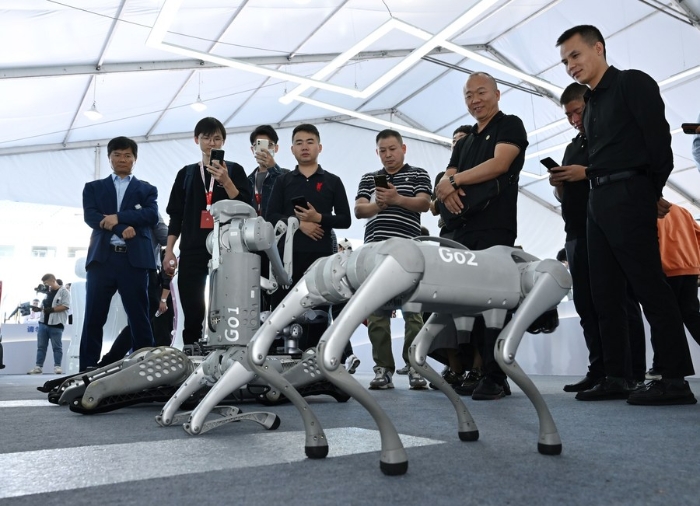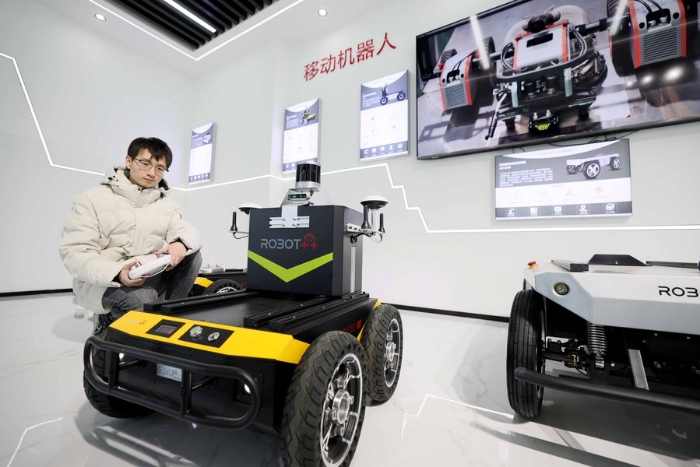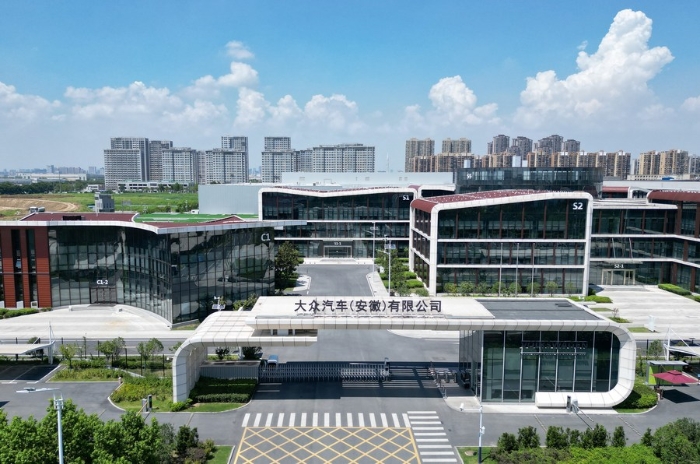Behind "Hefei model": How reforms reshape China's emerging tech hub
2023-12-19 09:09:18 | Author:xinhua | Source:xinhua 2023-12-18
* An inland city much less conspicuous a decade earlier, Hefei, capital of east China's Anhui Province, today stands as a thriving cluster of cutting-edge science and technology and dynamic tech-intensive industries.
* Much of the city's achievement has been attributed to what some call the "Hefei model," a unique approach to fostering new industries by effectively combining the roles of state-owned capital and private enterprises.
* As an underlying logic of deepening reforms in the past decade, China wants to ensure that the market plays a decisive role in resource allocation and the government better plays its role.
by Xinhua writers Wang Xiuqiong, Li Baojie, Chen Shangying, Wang Haiyue
HEFEI, Dec. 18 (Xinhua) -- From an "artificial sun" setting global records in nuclear fusion to a deep space exploration lab that supports China's moon missions and a quantum computer prototype that can solve intractable problems 10 quadrillion times faster than the world's fastest supercomputers, Hefei boasts an array of accomplishments.
An inland city much less conspicuous a decade earlier, this capital of east China's Anhui Province today stands as a thriving cluster of cutting-edge science and technology and dynamic tech-intensive industries.
The transformation came as China pressed ahead with a wide range of reforms in the past decade to make its economy more innovation-driven with a higher quality of development.

People look at robots during the 6th World Voice Expo in Hefei, east China's Anhui Province, Oct. 24, 2023. (Xinhua/Zhou Mu)
Much of the city's achievement has been attributed to what some call the "Hefei model," a unique approach to fostering new industries by effectively combining the roles of state-owned capital and private enterprises.
"The 'Hefei model' is a path to better economic development for underdeveloped cities. It is the result of years of explorations by the local government, which has stricken a proper balance between the government and the market," said Liu Zhiying, a professor at the School of Management of the University of Science and Technology of China (USTC).
During the past decade, Hefei's economic output surged to over 1 trillion yuan (about 140 billion U.S. dollars) from around 400 billion yuan, placing it among the fastest-growing cities in the country. Strategic emerging industries now account for more than half of its industrial output, which jumped 9.7 percent year on year in the first 10 months of 2023, the highest growth in nearly 19 months outpacing the national total.
ZOOMING INTO THE SUCCESS STORY
Deepening reform of state-owned capital management is a key part of Hefei's success story.
State capital is directly invested in leading enterprises of emerging industries that are viewed as strategically important but often considered by private investors as too risky or costly. The state capital gradually exits from these enterprises after their market prospects become clearer and they attract interest from non-government investors.
State investment returns are then used to support more projects in the industry to cultivate a resilient industrial chain. A healthy industrial ecology is developed in this process, drawing more outside investment, technologies and talent to form a virtuous cycle.

This aerial photo taken on Aug. 20, 2023 shows a manufacturing base of Chinese electric car manufacturer NIO in Hefei, east China's Anhui Province. (Xinhua/Guo Chen)
NIO, one of China's fastest-growing electric vehicle makers, secured billions of yuan of state capital investment from Hefei in 2020 when the company had been in difficulty and failed to get support from other cities as the emerging industry's outlook was clouded by uncertainties.
Nio's share prices rebounded sharply over the next several months following the bailout. The local government then sold part of its stakes and proceeded to invest in a new industrial park for smart electric vehicle manufacturing to seek sustained development of the industry.
"Hefei serves as a good example of successfully integrating an efficient market with a well-functioning government," said Jessie Wu, Nio's vice president in charge of industrial planning. "The local government exited even when our share prices were continuing to rise because its purpose was to support a whole industry rather than gain more profits. The government still holds stakes but our operation is independent, without any interference from the authorities."
As an underlying logic of deepening reforms in the past decade, China wants to ensure that the market plays a decisive role in resource allocation and the government better plays its role. This is a key part of the country's efforts to build a high-standard socialist market economy.
During the past decade, Hefei poured over 160 billion yuan of state capital into strategic emerging industries, with earnings nearing 60 billion yuan, stimulating more than 620 billion yuan of total investment, according to local authorities.
The local government has also led the creation of a "jungle of funds" that meet enterprises' diverse needs for investment at different stages of development, with a total scale of over 170 billion yuan and higher risk tolerance than many other cities.

Employees work at a production line of display screens of a company in Yaohai District, Hefei, east China's Anhui Province, Nov. 16, 2023. (Photo by Xie Chen/Xinhua)
Zhang Yi, Party secretary and director of Hefei's state-owned assets supervision and administration commission, said that investment choices by the state capital have been market-oriented.
Officials in charge of investment have a professional and in-depth understanding of the market and industrial trends, with external evaluation from top consulting firms and experts, due diligence and legal reviews, he added.
Some have described Hefei's administration as a "government of investment bankers," a depiction acknowledged by Zhang as a positive endorsement for the performance of local state capital investment.
"We have become a bellwether of investment. If our state investment goes into certain projects, they would attract many more non-government investors," he said.
AN EMPOWERING BRIDGE
In addition to state capital investment, Hefei's government has carried out deeper reforms. The city has set up special municipal-level committees for advancing sci-tech innovation and fostering strategic emerging industries.
"We have to mobilize resources citywide to support these sectors as they typically need a long period of development before generating returns and face great uncertainties," said Yuan Fei, a member of the standing committee of the municipal Party committee and vice mayor of Hefei. "It's like we push for physical reactions first until chemical changes occur, when they have appeal to the market."

A technician adjusts an intelligent robot at a company in Yaohai District, Hefei, east China's Anhui Province, Nov. 16, 2023. (Photo by Xie Chen/Xinhua)
Covering an area bigger than 1,700 soccer fields, one of the world's largest city parks in Hefei has been turned into a gigantic testing ground for futuristic self-flying taxis, autonomous buses and drones delivering takeaways.
This is one of the "super scenarios" local authorities have opened for tech firms to try out new technologies before commercialization. A special agency has been established to meet the demand for application scenarios, which are often a luxury for innovative startups and researchers but important to their commercial prospects.
This year, more than 160 tech companies have already been given access to various application scenarios to pilot their technologies and products, according to the Hefei Development and Reform Commission.
"The government should be a bridge between sci-tech innovation and industrial innovation," said Yuan. "We see science and technology from the perspective of how to use it to support industrial development, and development should be our top priority."
The government organizes road shows or competitions involving innovative projects at various scales to connect them with domestic and even global investors. It has also set up over 50 R&D agencies jointly with colleges and research institutes and teams to discover and incubate their research results, cultivating over 1,400 high-tech firms so far.
Hefei's efforts to seek industrial opportunities in science and technology have paid off. It is now home to a world-class new display industry with annual output exceeding 100 billion yuan, a thriving new energy vehicle sector that attracted hefty investments from Volkswagen, and one of the country's fastest-growing chip-making clusters.

This aerial photo taken on Aug. 20, 2023 shows a view of Volkswagen (Anhui) Automotive Company Limited in Hefei, east China's Anhui Province. (Xinhua/Guo Chen)
Nationwide, deepening structural reforms aimed at establishing a foundational system for all-around innovation have kicked in, helping boost China's ranking on the Global Innovation Index from 35th in 2013 to 12th this year.
Reforms in the new era are pushing local governments to focus more on creating a sound business environment and better serving enterprises and innovation rather than relying on administrative approvals, according to Liu from USTC.
According to Zepp Health, a smart wearable technology firm established in Hefei in 2013, a decade of reforms has transformed the local government from a provider of infrastructure and general policies to a more complex and upgraded role.
Local authorities have helped startups like Zepp Health get funding, talent and other resources in a consistent and prompt manner, and also demonstrated their professional knowledge and global perspective in cultivating competitive and profitable industries amid fierce market competition and great uncertainties, according to Zhang Xiaojun, co-founder and vice president of the company.
"In these terms, the government not only serves but also empowers enterprises in a multi-dimensional way," he said.
(Video reporters: Qu Yan; Video editors: Jia Xiaotong, Wei Yin, Li Qin, Liu Ruoshi, Zhou Sa'ang and Li Ziwei.) ■
